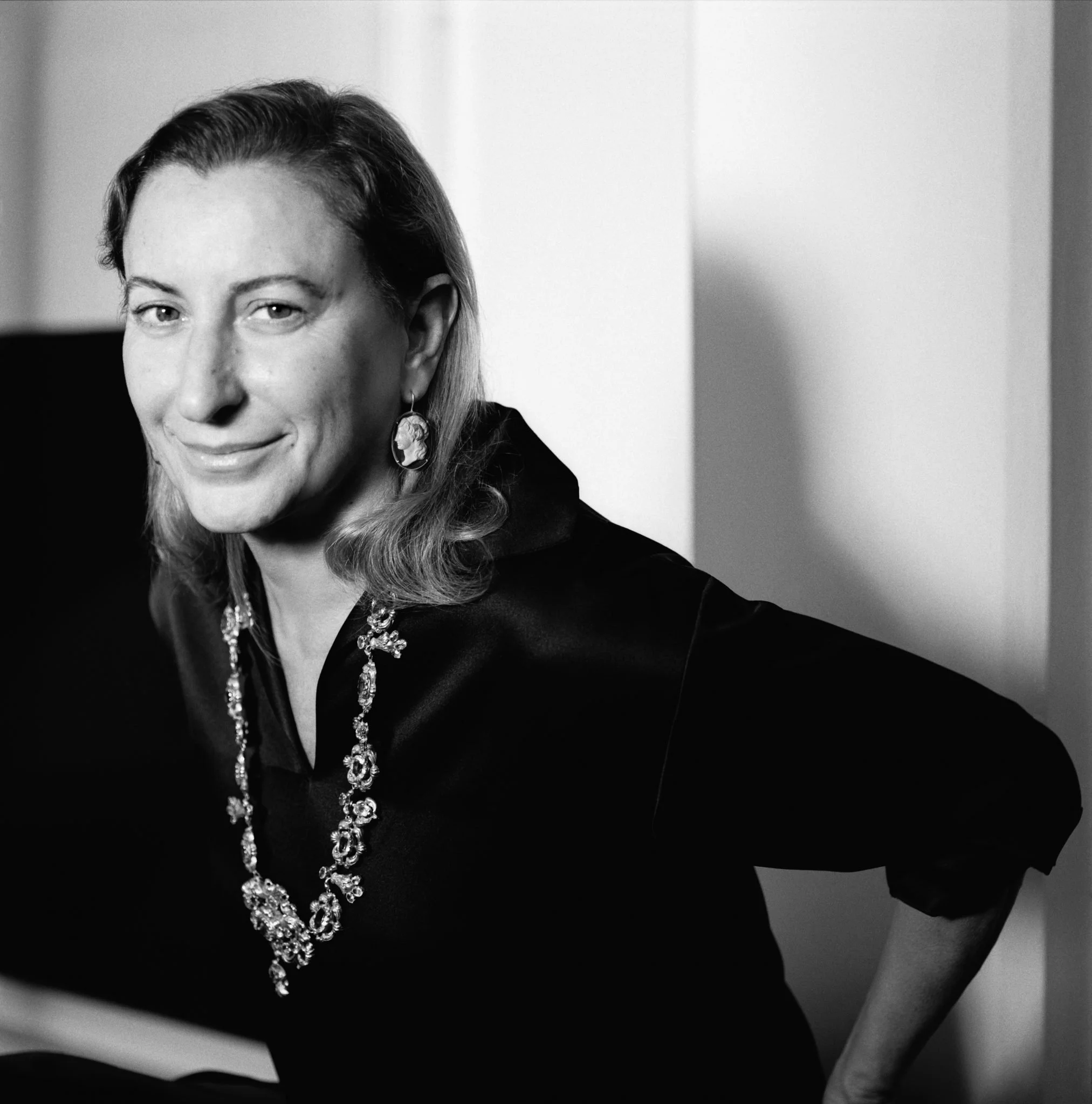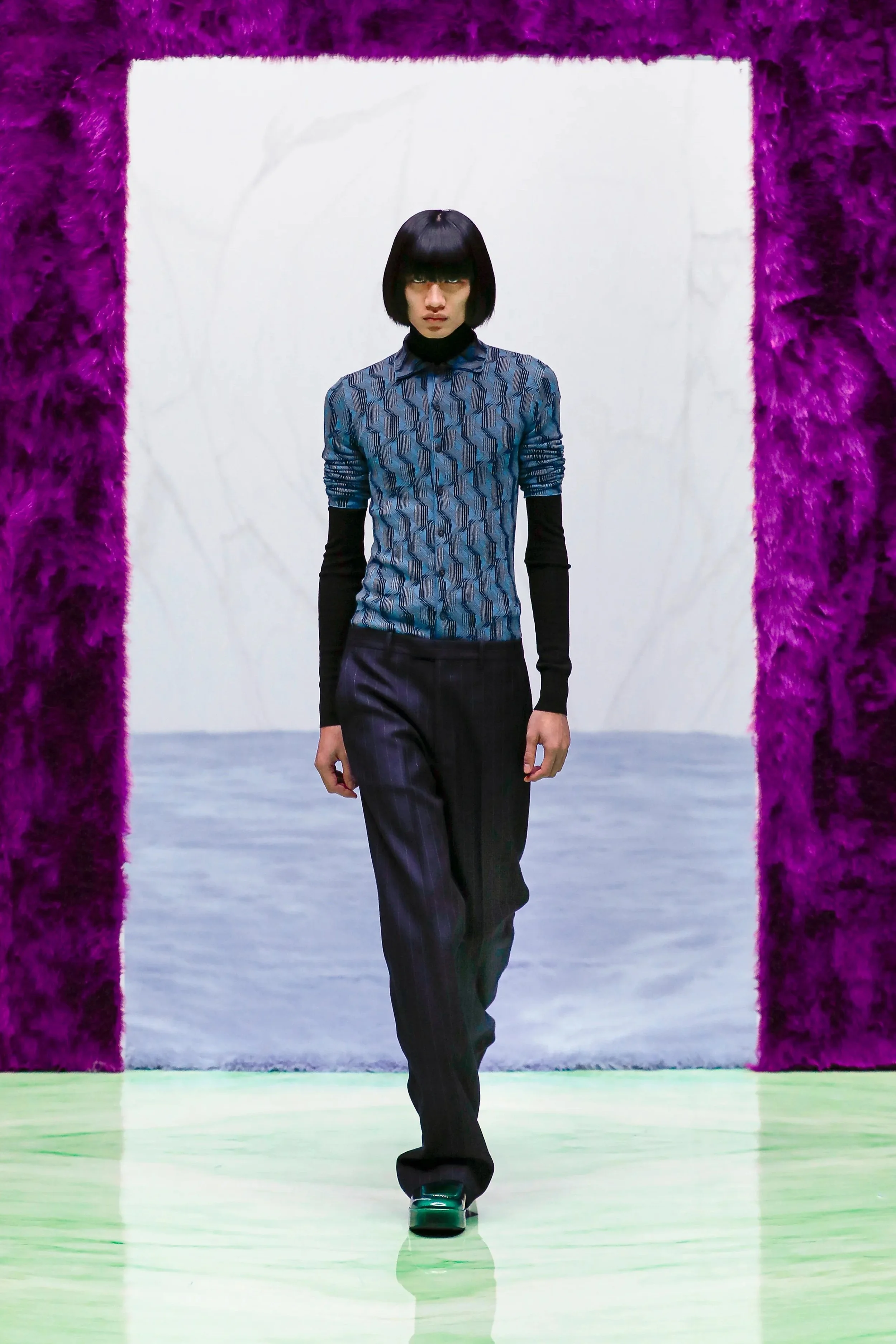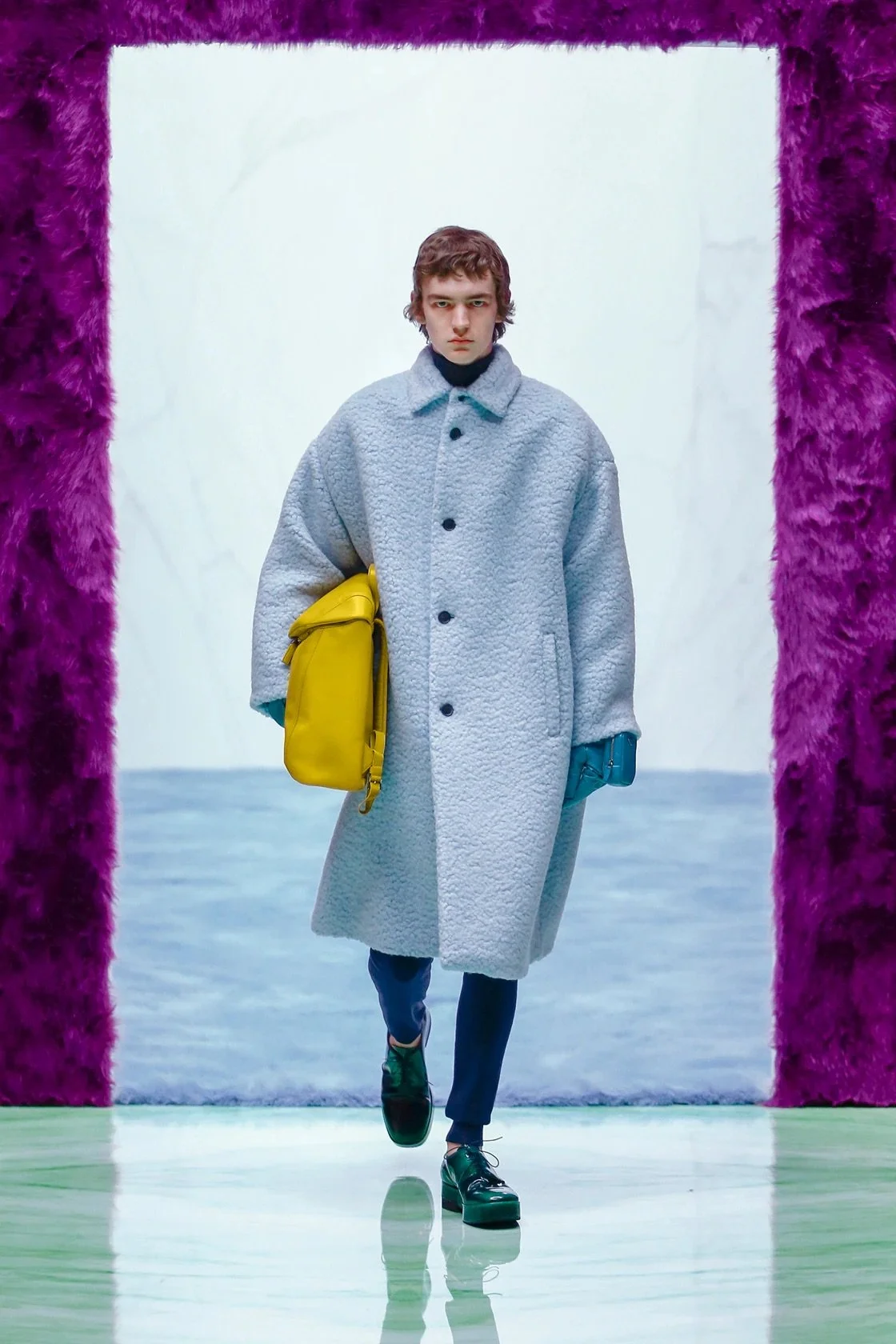
Analysis of a collection
The Ask
I was tasked with selecting a post-1959 designer collection and writing a research-based paper analyzing its themes, historical and cultural context, and aesthetic details, supported by images and primary sources.
Skills Used
Research
My research process began with identifying a designer collection that was not only visually striking but also rich in historical and cultural context. Drawing on the inspiration I had gained earlier in the semester from studying Miuccia Prada and Raf Simons, I was especially interested in how their individual design philosophies would merge in a collaborative collection. Their ability to balance innovation with heritage made me curious about how they reinterpreted menswear, which led me to the Prada Fall/Winter 2021 Menswear Collection.
I chose this collection because of its relevance to the moment it was created—during the COVID-19 pandemic—and because it was one of the first Prada collections to fully embrace a digital presentation format, reflecting broader shifts in the fashion industry. From there, I accessed primary sources including the full runway video from Prada’s official YouTube channel, and high-resolution images from the brand’s website. I also incorporated editorial reviews and commentary to deepen my understanding of the collection's reception and intention.
I analyzed how the designs reflected the zeitgeist of the early 2020s: the need for comfort, freedom, and adaptability in a time of uncertainty. Using fashion terminology, I examined the silhouettes, layering techniques, color palette, and materials used in the garments. I also explored the historical references—from 1960s Mod fashion to Italian tailoring traditions—and how these were reimagined through modern textures and prints.
In addition to the garments themselves, I studied the runway setting, casting, and digital presentation as storytelling tools. I investigated how these elements contributed to the collection’s themes of individuality, functionality, and sustainability. I also considered sustainability practices, such as the use of recycled nylon and eco-conscious materials, which added depth to Prada’s evolving design ethos.
This layered research helped me better understand the storytelling and technical construction behind a fashion collection and gave me the tools to analyze both the visual and cultural significance of the designs in context.
THE PROCESS
Early in the semester, I had been particularly inspired by the work of Miuccia Prada and Raf Simons, whose bold creativity, intellectual approach to fashion, and unique ability to blend classic and conceptual design had already influenced my perspective on modern luxury. Their collaborative synergy intrigued me, and it led me to explore how they approached co-designing for Prada’s Fall/Winter 2021 Menswear Collection—a pivotal moment in the brand’s history and in the evolution of menswear.
Curious about how menswear was being redefined in recent years, I chose this collection for its striking balance between softness and structure, its rich use of texture, and the way it challenged traditional masculine codes through color, silhouette, and styling. I wanted to better understand how Prada and Simons combined their creative languages while remaining rooted in the house’s DNA. I began studying their design philosophies individually—Simons’ minimalism and subcultural references, and Prada’s fascination with uniformity, ugliness, and intellectual provocation—and how those themes emerged in this collection.
I collected primary sources including the full runway video and press coverage from outlets like Vogue Runway and Business of Fashion. Using design analysis tools and proper fashion terminology, I examined each look in detail—focusing on silhouettes, fabric choices, layering, knitwear construction, color stories, and proportions. I paid particular attention to the way the garments interacted with movement on the runway and how the setting, music, and model casting contributed to the collection’s tone.
I also researched the cultural and social climate of 2021, including how the pandemic had reshaped the role of clothing, particularly in menswear. Prada and Simons reflected this through hybrid pieces that blended comfort and elegance—structured coats paired with plush jacquard knitwear and slim trousers softened by texture. This helped me understand how their work wasn’t just aesthetic but also deeply reflective of the moment.
By studying their process—how they start with ideas, moodboards, and textures, rather than finished sketches—I gained insight into how fashion collections are constructed conceptually before they are ever cut or sewn. This deeper dive into the creative and contextual layers of their work was essential in shaping my analysis and helped me write a paper that felt both informed and inspired.
the outcome
View Here
-
View Here -
The result of this process was a well-researched paper that broke down an entire fashion collection, even though it was my first time analyzing a show and its designs in depth. It was challenging at first to connect the creative vision to the cultural and design elements, but ultimately, it taught me how every detail—from fabric to runway presentation—works together to tell a cohesive story.
4o








